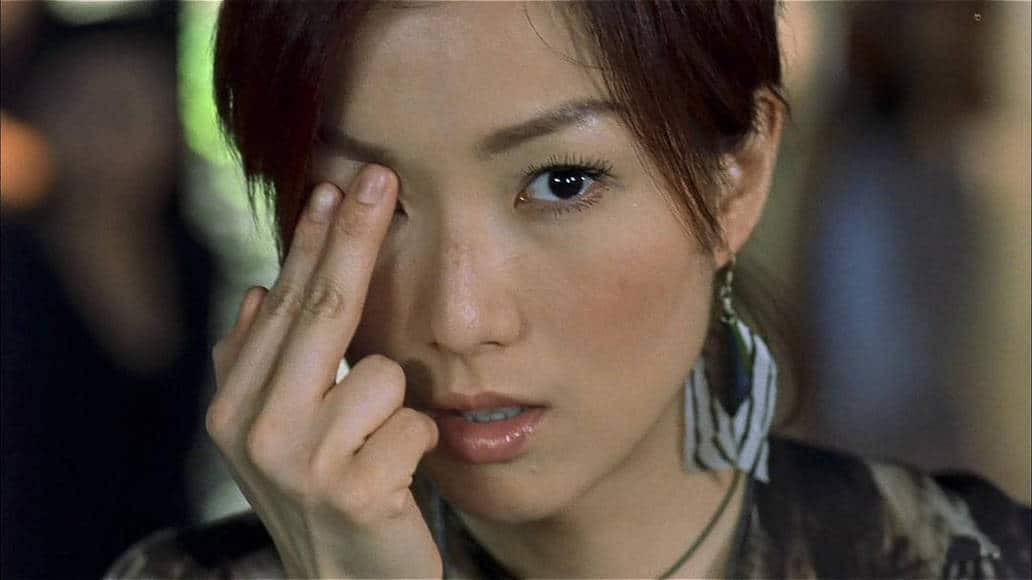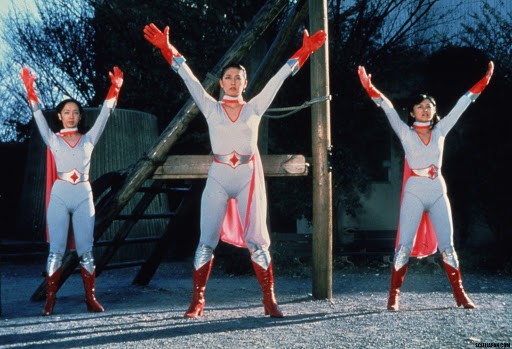Based on the bestselling book by Yoshida Shūichi, originally serialized in newspaper format, and then published in hardback in 2014, “Rage” provides a unique take on the traditional murder mystery. Boasting a star-studded cast including Watanabe Ken, Tsumabuki Satoshi, Matsuyama Ken'ichi, Hirose Suzu and Moriyama Mirai, “Rage” is a slow burning thriller which raises more questions than it answers.
“Rage” screened at the New York Asian Film Festival
The film begins with the brutal murder of a married couple in a sleepy suburb in Tokyo. Written on the wall are the Japanese kanji for Rage/Anger. The police immediately identify a young man, Yamaguichi, as the killer and post wanted photographs of him – including, for some baffling reason, a photofit of him in drag as they assume that the culprit would have had plastic surgery – which are then splashed all over the media. It seems therefore that “Rage” is going to follow the lines of the conventional murder mystery by concentrating on the police investigation and the eventual capture of the criminal.

However, the film immediately and at first confusingly, changes direction. Interweaving three different stories of strangers – one of whom is the killer – who recently locate to diverse places in Japan, “Rage” is primarily concerned with the reaction of a community to the arrival of an outsider. The first stranger is Tanaka (Moriyama Mirai) who appears one day on a small isle in the Okinawa Islands and is befriended by Izumi (Hirose Suzu) who has just relocated to Okinawa with her mother. The second stranger is Tashiro (Matsuyama Kenichi) who arrives in Chiba. He starts up a relationship with the young, beautiful Aiko (Aoi Miyazaki) – whose father, Yohei (Watanabe Ken) has just rescued from working at a massage parlour – and whose emotional fragility mirrors his own. The final stranger is Naoto (Ayano Go), who is picked up by closeted salaryman Yuma (Tsumabuki Satoshi), during a visit to a gay bathhouse in Tokyo. Any one of these strangers could be the killer. Yet, the revelation of the murderer is not the film's primary purpose but rather provides a mechanism through which explores the intricacies of relationships and the tenuous bonds of trust between young people in contemporary Japan.
Lee does not shy away from addressing difficult political issues including the rape of young Japanese women by US servicemen who are still stationed in Japan, mainly in the area surrounding Okinawa, the rise in sex-trafficking and exploitation of vulnerable young women in the sex industry and the oppression of LGBT individuals in what is still a conservative nation. He also makes us care about all three young men, who may or may not be the killer, in such a way that the final revelation has a heightened emotional resonance. All three are eventually betrayed by those closest to them as their social awkwardness becomes taken as a sign that they are in fact cold blooded killers in disguise.

“Rage” offers us a multifaceted view of contemporary Japan with the locations as much a key part of the narrative as the events that take place on them. The sandy beaches and crystal clear water of Okinawa, the small fishing port in Chiba and the neon artificiality of contemporary Japan provide a visual contrast which mirrors the stories that take place within their confines. The minimalist score by Sakamoto Ryuichi is suitably evocative, and echoes the contrasting locations and lives that the film follows. Performances are all exceptional, drawing us into empathetic identification with the characters whose stories of loss and trauma structure the narrative.
Ultimately “Rage” offers us a view of contemporary Japan that is defined by both its ordinariness and diversity, rather than its exoticism (as often perpetrated through Western media platforms). In many ways it reminded me of Kurosawa's “Creepy” in its detailing of the breakdown in community as a result of Japan's rapid modernisation and economic growth. As in “Creepy”, the outsider is the locus of anxiety and unease over otherness, driving a wedge between families and communities. “Rage” is a film that requires repeated viewings to fully appreciate the narrative complexity and the performances that are integral to it.
















